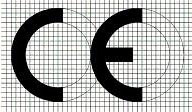ROHS compliant
ROHS compliant
An overview of the
RoHS is a mandatory standard established by European Union legislation. Its full name is the Directive on the Restriction of The Use of Certain Harmful Ingredients in Electrical and Electronic Equipment.The standard, which has been formally implemented since July 1, 2006, is mainly used to regulate materials and process standards for electronic and electrical products to make them more conducive to human health and environmental protection.The objective of the standard is to eliminate lead, mercury, cadmium, hexadecimal chromium, polybrominated biphenyls and polybrominated diphenyls (PBDes) from electronic and electrical products and to increase the number of o-benzene items to 10 substances.
Standard and regulatory requirements
Eu regulations/directives: 2011/65/EU
Scope of application:
|
1. Large household appliances |
7. Toys, recreational and sports equipment |
|
2. Small home appliance |
8. Medical equipment |
|
3.IT and communications equipment |
9. Video control equipment, including industrial monitoring and control equipment |
|
4. Consumer equipment |
10. Vending machine |
|
5. Lighting equipment |
11. All other electrical and electronic equipment not covered by the above categories, However, this does not apply to the products or equipment listed in Clause 2(4)。 |
|
6. Electronic and electrical tool |
/ |
*The implementation of this directive shall not be contrary to EU legislation on safety and health requirements and on chemicals, in particular regulation (EC)1907/2006, as well as eu specific legislation on waste management.
2011/65/EURequirements for hazardous substances and limits: The maximum allowable concentration of hazardous substances in homogeneous materials is:
|
Restricted substances |
Maximum allowable concentration |
| lead |
0.1 % |
| mercury |
0.1 % |
| cadmium |
0.01 % |
| Hexavalent chromium |
0.1 % |
| Polybrominated biphenyls (PCBS) |
0.1 % |
| Polybrominated diphenyl ethers |
0.1 % |
| Bis (2-ethylhexyl) phthalate |
0,1 % |
| Methyl-butyl phthalate |
0.1 % |
| Dibutyl phthalate |
0.1 % |
| Diisobutyl phthalate |
0.1 % |
RoHS2.0
RoHS 2.0 (2011/65/EU)Shall come into effect on July 21, 2011, and formally come into effect on January 3, 2013 (2002/95 / EC on the same day cancellation), 2.0 on the basis of the original RoHS directive RoHS products expanded to 11 categories, requires each member to ensure that the EEE and including the maintenance parts or reused or cable or upgrade the capacity of their function/components conform to the requirements of the new instructions, etc.RoHS 2.0 defines homogeneous materials clearly and stipulates the responsibilities and obligations of manufacturers, authorized representatives, importers and distributors.During the production process, the manufacturer must draft the necessary technical documents, implement the internal production control procedures in accordance with model A specified in Appendix II of decision no. 768/2008/EC, and provide A declaration of conformity before putting the CE mark on the end product.

Manufacturers are also required to keep technical documentation and compliance statements for 10 years after the product is launched.The directive covers 41 exemptions and will be updated constantly.
